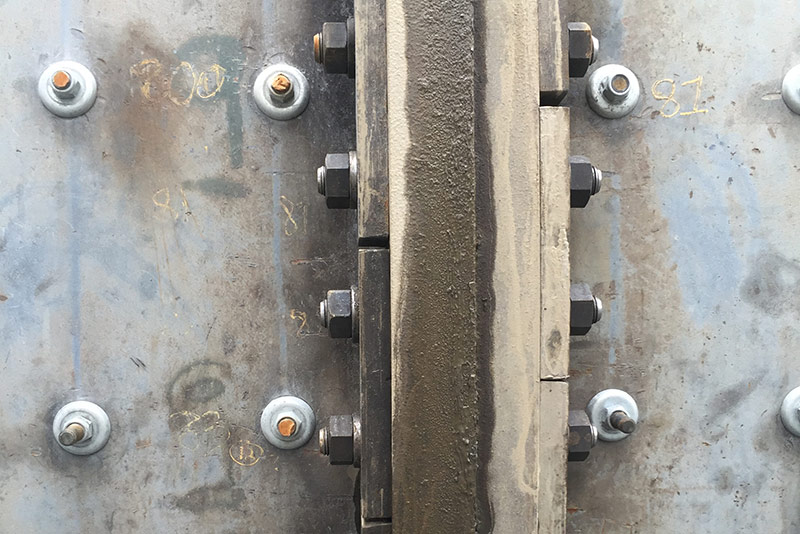Case Studies
Case Study 1
The problem
A centre circular flange joint on a Ball mill, had breaking flange bolts and a weeping joint. The mine was experiencing stoppage on an almost daily basis, resulting in considerable lost production.
The mining company had used several specialist contractors to look at the issue but had been unable to run their mill with sufficient uptime to reach their production targets.
Significant financial losses were accumulating daily as the client was a gold producer and could not explain to the increasingly worried stakeholders how the revenue leakage could be stopped.
The solution
BoltPrep collated all the necessary technical information, produced the relevant measurements and monitored the already installed fasteners over a short period. The results were surprising to the mill operators in that It was found that a greater load could be applied to the fasteners and the joint from day one of operations. The client realised that an unnecessary loss of production had occurred since installation but they had now identified the reason of production target shortfalls.
Bolt Prep replaced several of the fasteners in the affected area and re-bolted the joint to a new load calculated to provide a greater clamping force.
Once the mill was returned to operation, the seepage which had been seen coming from the joint stopped, and no further breakage was recorded from shut down to shut down. The mill has now been running to production schedule for over 12 months without any unplanned down time resulting from this issue.
The stakeholders successfully sourced further capital in order to continue the expansionary track as production targets were met and anecdotally, the mining company experienced a sharp increase in its share value once it was public knowledge that the issue had been remedied.

Case Study 2
The problem
A mining company had overlooked the monitoring of their critical fasteners for several years and had experienced critical fastener failures across three of their ball mills.
Boltprep was contacted because the client had old and outdated equipment and could not locate anyone able to complete the set up and operate the equipment to the required standards.
The solution
A Boltprep technician carried out a site visit and inspected the equipment and all related data that the mine had in relation to the bolted joints of the mills. During this visit it was found that the equipment owned by the mining company was defective and not fully operational. Additionally, due to the age of the equipment it was no longer supported by the original manufacturers.
Boltprep repaired the equipment and implemented a change over from the old equipment to the most current, advanced equipment in line with a set budget; allowing the mining company to again cost effectively monitor their critical bolted joints and implement systems and procedures to prevent unplanned down time.

Case Study 3
The problem
Liner bolt failure resulting in unplanned down time.
The mining company had been experiencing bolt breakage of the bolts holding the shell liners in place, although the mine had several of the exact same mills, this was the only mill which had been experiencing this issue.
The solution
BoltPrep was asked to isolate the issue as much as possible and provide options to stop the breakage.
Our technicians assisted the liner company during the next scheduled change of the liners and monitored the preload that was applied to the liner bolts.
We found that the load applied was to the correct specification and should have been sufficient.
After the mill had been placed back into operation, it was stopped for the scheduled re-torque after 24 hours of operation. Our technicians took the opportunity to re-monitor the load the liner bolts were applying. It was found that a considerable quantity of the liner bolts had lost 100% of the load which had been applied. After closer inspection it was found that the washers under the nuts had deformed and subsequently the load applied by the fastener had been lost.
Once the washers had been replaced with a stronger alternative, the mill was put back into operation and operated continuously for two years without a single bolt failure or any unplanned down time attributed to this issue. Production did not need to be stopped until the next scheduled reline.

